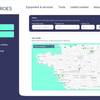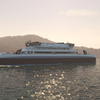Make an Auditor Happy: Keep your files tidy and your papers dirty
File names are important when it comes to compliance auditing of safety management systems and document control. Attaching reports and sending via email, once a costly proposition, is now an effective and quick means to get data from the ship to the office in a much timelier and trackable way. But, have you thought about how to name these files so that once they’ve all been received they’re easily sorted and retrieved, both in the office and onboard?
There is nomenclature, special terminology, which carefully names the parts of the vessel. Such care should also be taken to name the ever important “objective evidence” the auditors want to see on their yearly visits. If you name your reports in such a way that it makes sense to your operation — by three letter code representing the vessel name, for example, followed by an abbreviated report name, followed by a date — then all of the reports are grouped by vessel, report type and chronology. Now you or the auditor can quickly determine if any reports are missing. If all reports for a month are required to generate another report, then grouping by month may make better sense to your operation. A neat and tidy system to find information presents a clean and organized picture to the auditor. The auditor is happy that the information is easier to find and that time is not spent searching for a document that may or may not exist. The auditor can feel confident that company procedures are being followed just by verifying that the reports have been made and are easily available for review, and can go on to look at something else. The auditing is just a sampling and it is difficult verify every aspect of vessel operations. A little bit of effort training the crew to label things the correct way and establishing a directory of electronic file locations will mean big payoffs when it comes time for reviews.
But be careful in keeping everything in electronic version and too clean. Because companies feel the need to reduce paper usage and crews are running out of room to keep all this objective evidence for the auditors, it makes sense to move away from paper and toward electronic documents. However, a marked-up hard copy of some documents, especially those that require signatures, such as permits to work, job safety analysis reports, vessel familiarity training, etc., can be better than the electronic version. If an auditor sees forms like this on a vessel, already stored on a computer filled-out and ready to print, it can make that auditor wonder if the forms are being used as intended and if it’s not just a paper exercise. That sends shivers down my spine when you’re dealing with issues such as confined space entry.
Documents needed to perform a series of tasks, or a checklist, should look like they actually saw the light of day. Greasy fingerprints, highlighted marker — good. Perfectly clean and sanitized — bad. I look at these check lists and permits as living documents, something that should have been used in the field if used correctly. A too-clean version makes me wonder if something was left off when the person went to recopy it, or if it was just printed straight off the computer without being verified first in the field. People need to see the form, have the discussion, verify the items are being done and check them off. Routine or non-routine, having too-clean a copy can create doubts about whether the process is actually being done.











